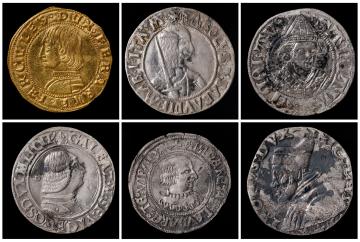Statue of Dionysus (Bacchus), god of wine (stock image).
Credit: © Ruslan Gilmanshin / Adobe Stock
A grape variety still used in wine production in France today can be traced back 900 years to just one ancestral plant, scientists have discovered.
With the help of an extensive genetic database of modern grapevines, researchers were able to test and compare 28 archaeological seeds from French sites dating back to the Iron Age, Roman era, and medieval period.
Utilising similar ancient DNA methods used in tracing human ancestors, a team of researchers from the UK, Denmark, France, Spain, and Germany, drew genetic connections between seeds from different archaeological sites, as well as links to modern-day grape varieties.
Read the rest of this article...


